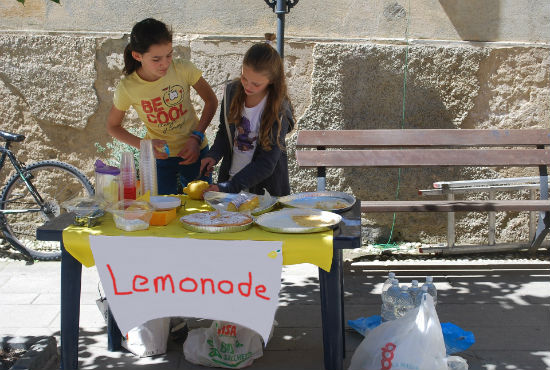By Justin Fundalinski, MBA | August 15, 2015

Helping Kids Retire
Here at the office we talk a lot about Roth IRAs and the benefits of tax deferral and exemption. However, much of the benefits derived from tax deferral are demonstrated the longer taxes are deferred and the longer the account is allowed to grow. Of course, some variation of this concept has been drilled into many of us over and over. I remember countless times that my mother, father, aunt or uncle told me to always save X% of my check and I will set myself up for retirement. But who really understands the concept of the time value of money when they are 16, let alone ever? Mix that with tax deferral, inflation, and a bunch of meaningless letters and numbers (IRA, ROTH, 401k, etc…) and I figured I may as well play it safe and deposit that money into a savings account earning next to nothing. Well therein lies the problem! I didn’t have any guidance outside of “save for retirement.” This article is put together to introduce custodial Roth IRAs and describe how you can truly help a child save for retirement.
Contributing to a Custodial IRA
Anytime a child earns income they can contribute to an IRA[1], however they cannot set this IRA account up on their own if they are under the age of 18 (age is different is some states). This is where the adult comes in. You can simply open up what is called a custodial IRA on their behalf. As the custodian you govern (but do not own) this account until your child’s 18th birthday – at which time the custodial IRA is turned over to the child. While the money is in a custodial IRA it is a perfect time to start the education on retirement savings, IRAs, and the effects of compounded earnings.
Traditional IRA or Roth IRA?
There are Traditional and Roth Custodial IRA options that can be used; however we recommend that a Roth account be used. The primary reason is that generally children under the age of 18 are in the lowest tax bracket that they will ever be in (if any at all), negating any argument of the upfront tax savings that Traditional IRA advocates may have. Also, we feel that the very favorable tax treatment of Roth IRAs makes them subject to major changes or even possibly elimination in the distant future as laws are passed to generate more tax revenue (think of it as a – “take advantage while you can”- attitude). Talking about these things to a 16 year old may have little impact, but doing it and getting that IRA statement in the mail may just start to engrain the concepts and the desire to save.
The Value of Time
Another fascinating thing to discuss is what that investment in a Roth IRA could potentially do. As a quick example, say for instance your 16 year old child earns $6,000 working part time at the local grocery store. You convince them to stash away $1500 by matching their contribution dollar for dollar (or maybe grandpa does J). So, $3,000 total is contributed at age 16. That single investment growing on average at 7% could turn into over $80,000 when they are 65 and looking to retire. Not only is there now the potential for over $80,000, because this is a Roth account all of this money can be withdrawn tax free!
Discouraging Withdrawals
As we know sometimes we need money for other things. Notably, the child should be made aware of the penalties that are built into IRAs if the money is withdrawn at the wrong time. These are great talking points to have with the child to discourage withdrawals. Specifically, with Roth IRAs you can withdraw your contributions any time without any taxes or penalties. The earnings however, can only be taken without taxes or penalties if they are withdrawn after the account has been open for 5 years and the IRA owner is over 59½.
There are few exceptions to these rules, but some exceptions could very well apply to the child later in life. For instance, a withdrawal of up to $10,000 of earnings can be made to pay for a first time home purchase without taxes or penalty. Or, if earnings withdrawals are used to pay for qualified education expenses there are no taxes or penalties. Remember, these two exceptions are in regards to the earnings on the account and they can be used in conjunction with withdrawals of contributions.
We Can Help
The point of this article is to simply get you thinking of other ways to teach your kids or grandkids about saving for retirement. On that note, not too many people are experts on this and we welcome having that conversation with you and your kin in tow. Please feel free anytime to schedule an appointment with us for a complementary meeting to start the discussion.
[1] Interestingly enough, the actual money that is contributed does not have to be the actual income earned. As long as there is income earned a contribution can be made to a custodial IRA up to the total amount earned or a maximum of $5,500 in 2015. Using this to your advantage, this could be an excellent way to encourage savings. That is, get the child to save 10% of their income in an IRA and you can “match” their contribution as long the total contributions do not exceed the previously mentioned limits.





